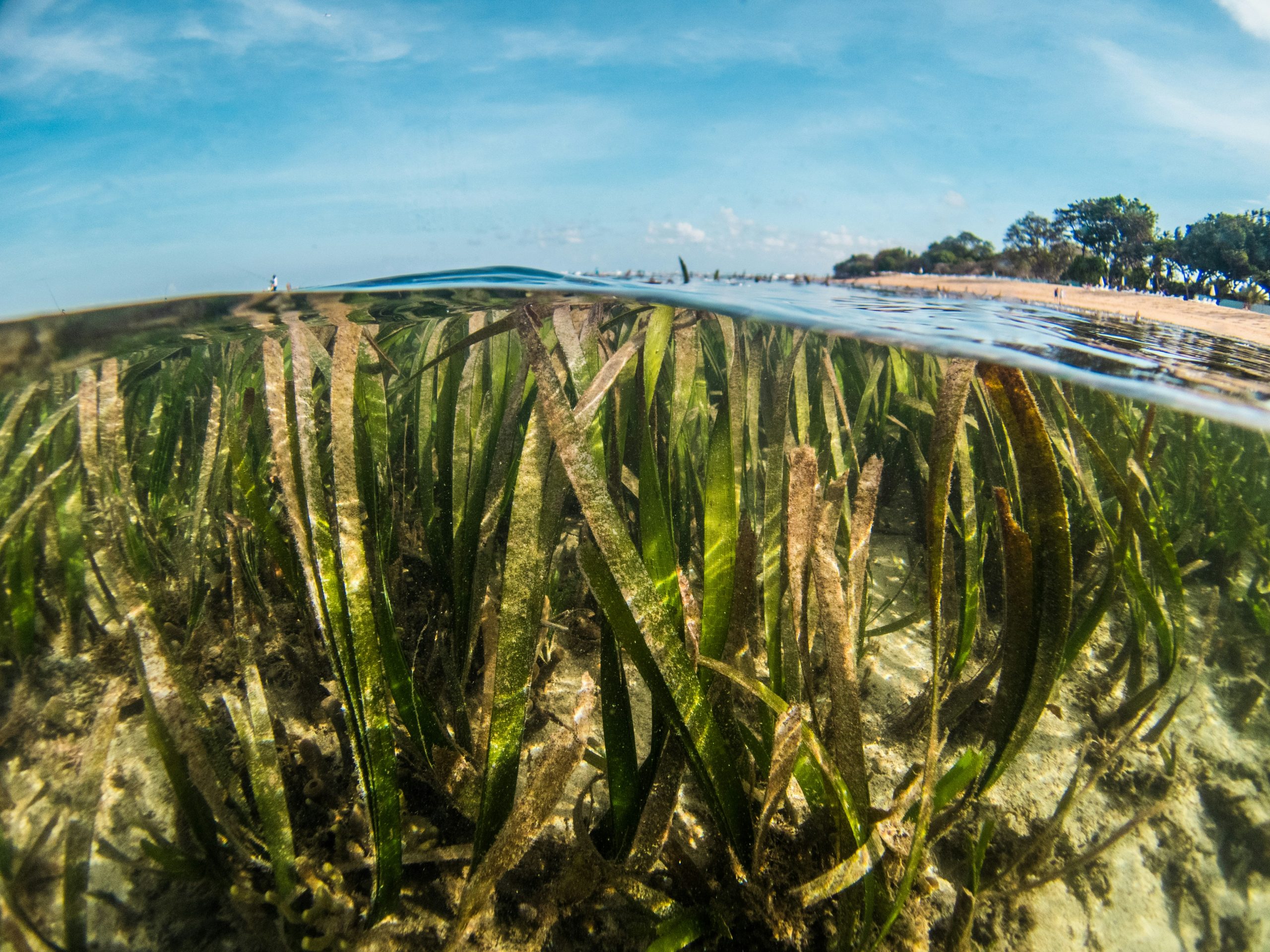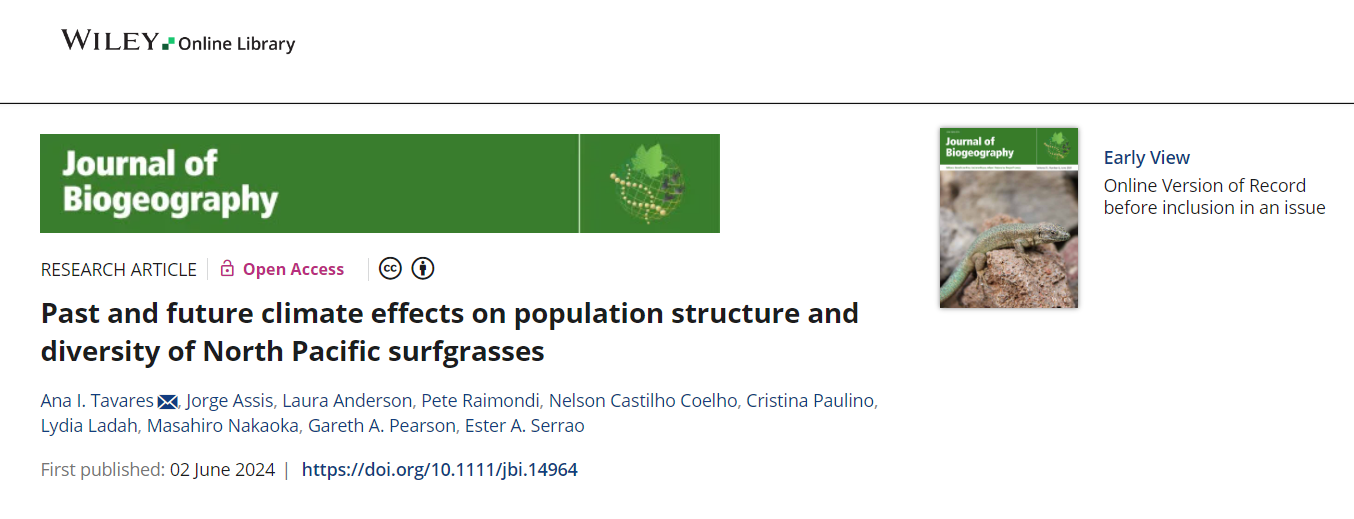

TITLE
Past and future climate effects on population structure and diversity of North Pacific surfgrasses
JOURNAL
Journal of Biogeography
AUTHORS
Ana I. Tavares, Jorge Assis, Laura Anderson, Pete Raimondi, Nelson Castilho Coelho, Cristina Paulino, Lydia Ladah, Masahiro Nakaoka, Gareth A. Pearson, Ester A. Serrao
ABSTRACT
Aim: Understanding the impacts of past and future climate change on genetic diversity and structure is a current major research gap. We ask whether past range shifts explain the observed genetic diversity of surfgrass species and if future climate change projections anticipate genetic diversity losses. Our study aims to identify regions of long-term climate suitability with higher and unique seagrass genetic diversity and predict future impacts of climate change on them.
Location: Northeast Pacific.
Time Period: Analyses considered a timeframe from the Last Glacial Maximum (LGM; 20 kybp) until one Representative Concentration Pathway (RCP) scenario of future climate changes (RCP 8.5; 2100).
Major Taxa Studied: Two seagrass species belonging to the genus Phyllospadix.
Methods: We estimated population genetic diversity and structure using 11 polymorphic microsatellite markers. We predicted the distribution of the species for the present, LGM, and near future (RCP 8.5, no climate mitigation) using Species Distribution Models (SDMs).
Results: SDMs revealed southward range shifts during the LGM and potential poleward expansions in the future. Genetic diversity of Phyllospadix torreyi decreases from north to south, but in Phyllospadix scouleri the trend is variable. Phyllospadix scouleri displays signals of genome admixture at the southernmost and northernmost edges of its distribution.
Main Conclusions: The genetic patterns observed in the present reveal the influence of climate-driven range shifts in the past and suggest further consequences of climate hange in the future, with potential loss of unique gene pools. This study also shows that investigating climate links to present genetic information at multiple timescales can establish a historical context for analyses of the future evolutionary history of populations.



